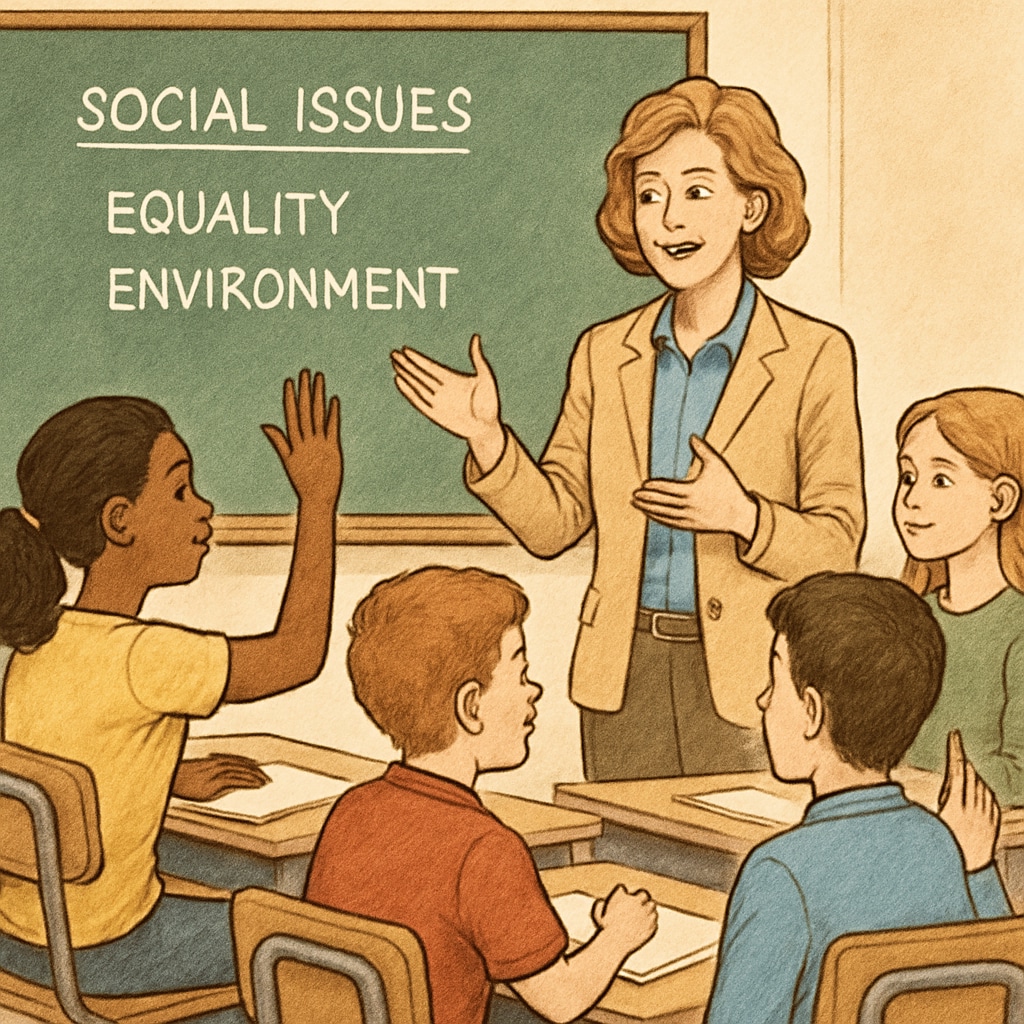When a sixth-grade social studies textbook suggested that a person’s social class at birth significantly determines their future, it sparked heated debates among parents and educators. The phrasing in the textbook, which leaned heavily on the concept of “class stratification” and its perceived rigidity, led one parent to question whether such content undermines the ideal of equal opportunity. This incident raises crucial questions about how K12 education should balance the realistic portrayal of societal structures with the cultivation of aspirational values in students. It also highlights the need for closer collaboration between parents and schools to guide children through complex and often controversial topics.
Understanding Class Stratification and Its Role in Education
Class stratification refers to the division of society into hierarchical layers based on factors like income, occupation, and education. While this concept is central to sociological studies, its presentation in K12 education can be contentious. For young learners, the idea that one’s social class might limit their opportunities could be disheartening, especially if it’s framed as an unchangeable reality. However, proponents argue that it’s essential to educate students about systemic inequalities to foster critical thinking and awareness.
For example, the textbook in question described class stratification as a “rigid system” that “influences access to resources and opportunities.” While factually accurate in many historical and sociological contexts, such language risks being perceived as discouraging. The challenge lies in presenting these realities without diminishing students’ belief in their potential for upward mobility.

Should Social Studies Emphasize Mobility or Reality?
One of the primary debates sparked by this incident is whether social studies curricula should prioritize exposing students to harsh societal realities or emphasize the possibility of overcoming systemic barriers. Advocates for a more optimistic approach argue that education should inspire children to strive for success regardless of their starting point. On the other hand, critics warn that sugarcoating societal issues might lead to a lack of critical awareness and accountability for systemic reform.
The question becomes: How can educators strike a balance? According to a Britannica entry on social stratification, it’s crucial to provide historical and global context to these discussions. For instance, while class stratification has existed in various forms across civilizations, modern democratic societies have mechanisms like education and social programs designed to promote mobility. Highlighting such dualities can help students grasp the complexity of the issue without feeling defeated by it.
The Role of Parents and Schools in Navigating Complex Topics
Parental involvement is crucial in helping students process challenging topics like class stratification. Parents can provide personalized perspectives, offer hope, and encourage children to ask questions. Schools, meanwhile, must ensure that the curriculum is age-appropriate and balanced in its portrayal of social systems. Open communication between parents and educators is key to addressing concerns and ensuring that children receive a well-rounded education.
For example, parents who take issue with specific textbook content can work with teachers to frame lessons in a way that aligns with educational goals while addressing their concerns. Schools can also host workshops or discussions to explain why certain topics are included in the curriculum and how they aim to prepare students for real-world challenges.

Fostering Critical Thinking Without Losing Optimism
Ultimately, the goal of K12 education should be to equip students with the tools to think critically while maintaining a sense of agency and optimism. This means addressing topics like class stratification honestly but also highlighting stories of resilience, upward mobility, and the role of collective action in challenging inequalities.
Teachers can employ strategies such as:
- Encouraging students to explore historical and contemporary examples of social mobility.
- Facilitating discussions about the factors that contribute to systemic inequality and how they can be addressed.
- Providing resources for further learning, such as this Wikipedia article on social class.
By doing so, educators can provide a nuanced understanding of societal structures while inspiring students to believe in their capacity to enact change.
Readability guidance: Short paragraphs and bullet points help break down complex ideas. Transitions such as “on the other hand” and “for example” guide readers through the argument. Active voice ensures clarity, and technical terms are explained in context.


